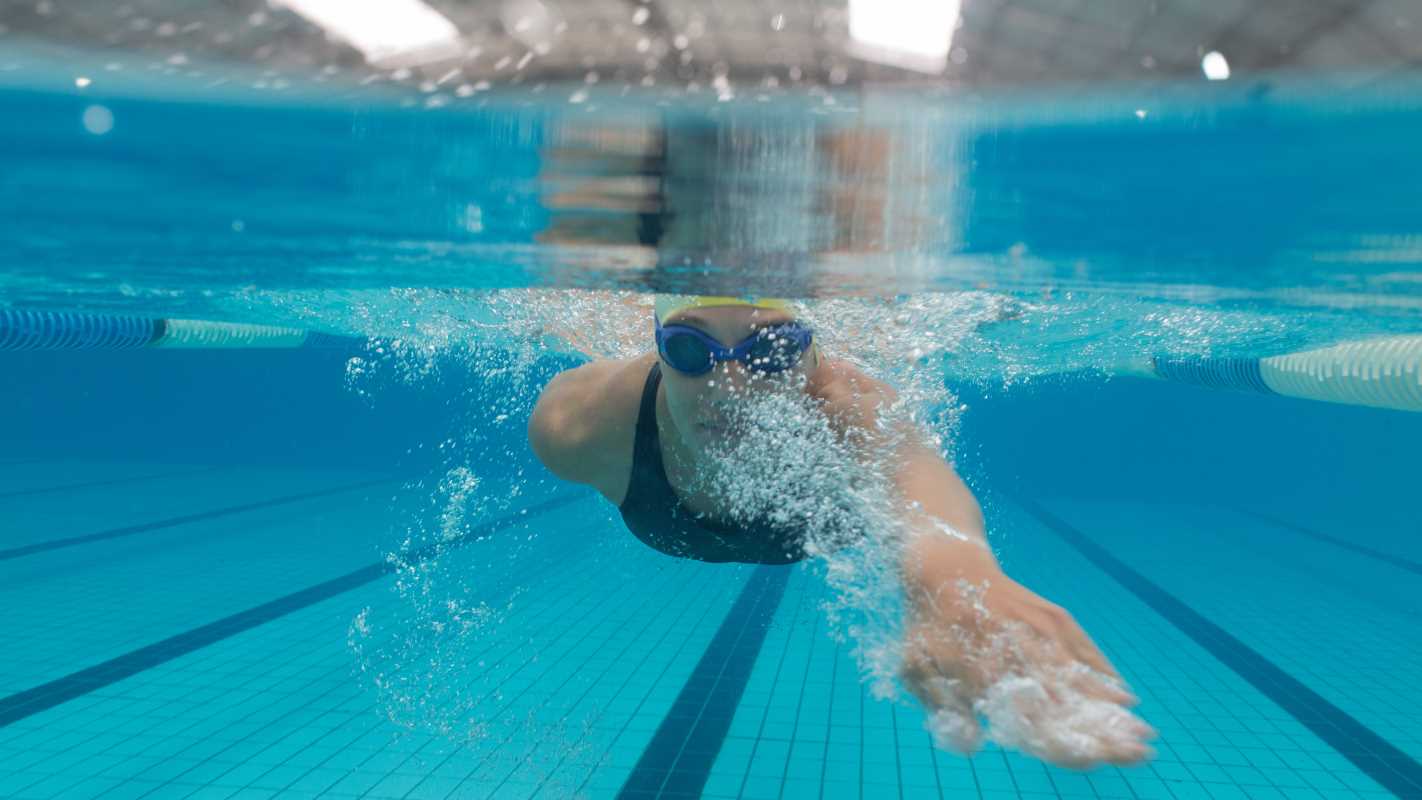Looking for a workout that’s easy on your joints, works your whole body, and is actually fun? Swimming might be the perfect answer. Whether you’re a seasoned athlete or someone just starting their fitness journey, swimming offers a unique combination of cardio, strength, and flexibility benefits. What’s more, it’s a low-impact exercise, meaning it puts less strain on your body while still delivering a great workout. You don’t even have to be an expert swimmer to enjoy it. With a little practice (and some water confidence), swimming can quickly become one of the most effective and enjoyable ways to stay active.
Here’s a deep dive into why swimming stands out as a full-body workout, how it benefits people of all fitness levels, and tips to help you make the most of this refreshing exercise.
What is a Low-Impact Exercise?
Low-impact exercises are activities that are gentle on your joints, making them especially valuable for people recovering from injuries, living with chronic pain, or simply looking for a workout that’s easier on their bodies. Swimming checks all the boxes for low-impact exercise:
- Water’s Buoyancy: When you’re swimming, the water supports your body, reducing stress on your joints and bones. This makes it an excellent choice for people with arthritis, joint pain, or other mobility challenges.
- No Hard Ground Impact: Unlike running or jumping activities, swimming doesn’t involve repetitive pounding on hard surfaces, which can strain your knees, hips, or ankles.
- Suitable Post-Surgery: Many medical professionals recommend swimming as a safe way to stay active while recovering from surgery or injuries.
Whether you’re splashing in a backyard pool or swimming laps at a professional facility, the low-impact nature of swimming ensures that you’re protecting your body while still reaping the rewards of a full workout.
How Swimming Works the Entire Body
One of the best things about swimming is that it doesn’t just target a single muscle group. When done right, it activates nearly every major muscle in your body, all while improving endurance and cardiovascular health.
Upper Body
Every stroke in swimming engages your upper body. For example:
- Freestyle and Backstroke: These strokes strengthen your shoulders, chest, upper back, and arms as they propel you through the water.
- Butterfly Stroke: Known for its challenging technique, this stroke works your shoulders, traps, and even your core intensively.
Lower Body
Your legs aren’t just along for the ride while you swim! Kicking helps tone and strengthen your lower half:
- Flutter and Dolphin Kicks: Used for freestyle, backstroke, and butterfly, these build strength in the thighs, calves, and glutes.
- Breaststroke Kick: This more deliberate, sweeping motion targets the inner thighs and hips.
Core
Swimming requires balance and coordination, which means your core muscles are constantly engaged:
- Stabilization: Your core keeps your body aligned and buoyant, preventing unnecessary drag in the water.
- Rotational Movements: Many strokes, like freestyle, involve a twisting movement that works your obliques.
Cardio and Strength Combo
What’s remarkable about swimming is that it combines strength and cardio training into one workout. Moving through water offers natural resistance, forcing your muscles to work harder than they do on land, while the continuous movement elevates your heart rate. This dual benefit makes swimming as good for building muscle as it is for burning calories.
Who Can Benefit From Swimming?
Swimming is a workout that truly works for everyone, regardless of age, fitness level, or experience.
Beginners
If you’re new to exercise, swimming is a comfortable entry point. You can start slow, build confidence in the water, and gradually increase your intensity or duration as your fitness improves. Plus, you don’t have to master every stroke to get started—a simple dog paddle or leisurely backstroke can still get your heart pumping.
Older Adults
For seniors, swimming is a safe way to maintain strength, mobility, and cardiovascular health without putting unnecessary strain on the joints. It’s also a social activity when done in a group or class setting.
Athletes
Even experienced athletes turn to swimming as a cross-training tool to build endurance, improve lung capacity, and decrease the risk of overuse injuries that can come from single-sport training.
People with Health Conditions
Swimming is often recommended for individuals managing chronic conditions like arthritis, obesity, or fibromyalgia. The water’s support minimizes pain, while the activity itself improves health metrics like heart rate and blood pressure.
Tips for Getting Started With Swimming
If you’re ready to incorporate swimming into your fitness routine, start with these simple steps to make your first swims enjoyable and effective.
Find the Right Location
- Sign up at a local gym, recreation center, or community pool.
- If you prefer the outdoors, look for a safe lake or ocean spot with calm waters and lifeguard supervision.
Pick the Right Gear
- Swimwear that’s comfortable and fits well is a must.
- Goggles can help you see clearly underwater and protect your eyes from chlorine.
- Don’t forget a swim cap if you want to reduce drag or keep your hair dry!
Start Small
- Begin with short sessions to build confidence and endurance. Even 10–15 minutes in the pool can be a great start.
- Practice basic strokes like freestyle or backstroke before attempting more complex ones.
Consider Lessons
- If you’re not confident in the water, consider taking swimming lessons. These can help you with learning proper technique, conserving energy, and building overall swimming skills.
Warm Up and Cool Down
Even though swimming is low-impact, it’s still a workout. Start with slower laps to warm up and finish with gentle stretches in the water to cool down.
Making Swimming Enjoyable and Sustainable
The key to a successful swimming habit is to make it something you look forward to. Here’s how to keep it interesting and fun:
Mix It Up
Try different swimming routines or strokes to keep things fresh. Consider shortening the rest period between laps or adding tools like kickboards or pull buoys to change the focus of your workout.
Go With a Friend
Swimming with a buddy can help you stay motivated, whether you’re trying competitive laps or just chatting between strokes during a casual swim.
Join a Class or Group
Water aerobics or group swims are enjoyable ways to meet others who share your interests while adding variety to your workouts.
Set Goals
Whether it’s improving lap time, swimming a longer distance, or mastering a new stroke, setting achievable goals can motivate you to keep going.
Reward Yourself
After a swimming session, treat yourself to something small, like a smoothie or relaxing time in the hot tub. Rewards make it easier to build habits.
 (Image via
(Image via





